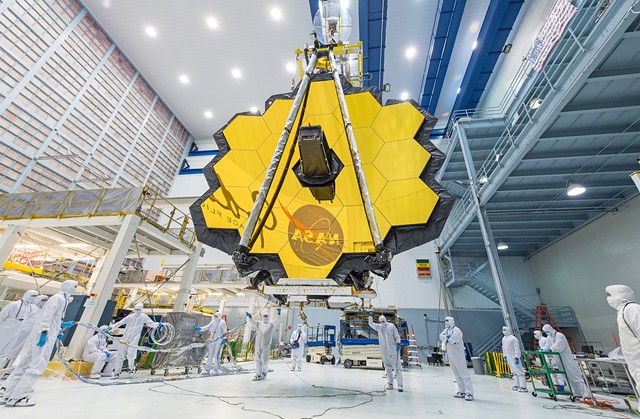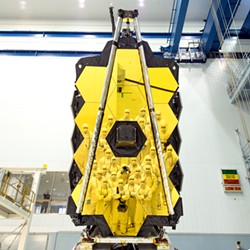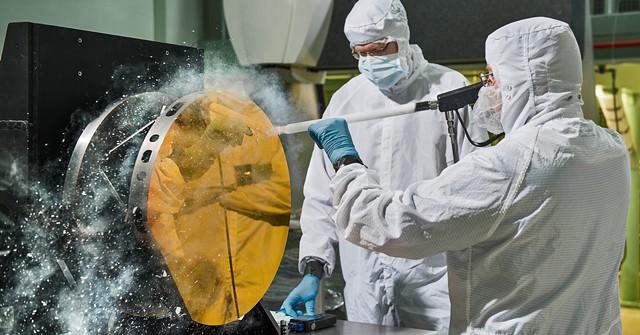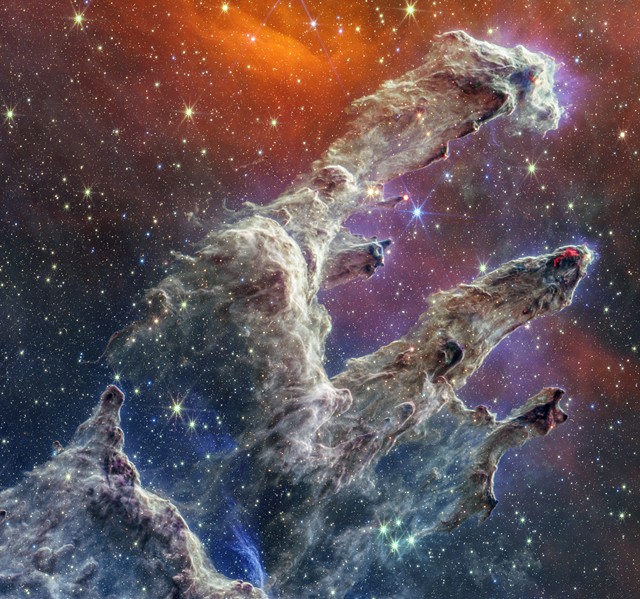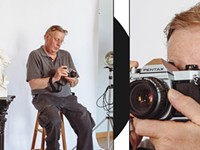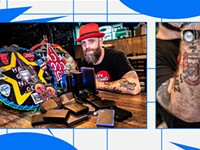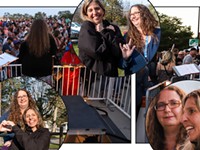[
{
"name": "500x250 Ad",
"insertPoint": "5",
"component": "15667920",
"parentWrapperClass": "",
"requiredCountToDisplay": "1"
}
]
Orbiting just under one million miles from earth is the pinnacle of space imaging: the James Webb Space Telescope. Rochesterians helped create it, and Rochesterians are using it to change the way the human race views the universe.
Between the University of Rochester, the Rochester Institute of Technology, Monroe Community College and companies such as L3Harris, hundreds of people who studied and worked around Rochester have been an integral part of the Webb Telescope’s success. Since its launch in 2021, NASA’s one-of-a-kind follow-up to the Hubble Space Telescope has peered deeper into space than anything before it, capturing breathtaking, illuminating images of some of the earliest galaxies in our universe.
Dr. Becky Borrelli, principal fellow at L3Harris and metrology engineer on the Webb Telescope, moved to Rochester in 2006 for the Institute of Optics at U of R where she earned her PhD. She has worked at L3Harris for nearly 12 years and was integral to the testing of the Webb telescope. Its sophisticated optics required such precision that an error the size of one micron — or one ten-thousandth the width of a human hair — would ruin its imaging abilities.
“One thing that I have not seen in a lot of places that I’ve lived is that MCC, RIT and U of R have this really great working relationship,” said Borrelli. “It’s not this competitive thing. We have our specialties and we’re going to build a source of knowledge and intelligence to fulfill this work.”
U of R’s optics and engineering programs, the physics and astronomy sides of RIT, and the strength of MCC as an educator and launchpad for students to enter into either those schools or straight into the workforce makes Rochester a hotbed for innovation in space programs.
Plus, L3Harris Technologies has decades of history working with NASA.
Darin Noel, L3Harris senior manager and project engineer on the Webb Telescope program, said around 1,300 people from Rochester worked on the project beginning as early as 1999. He also moved to Rochester to attend U of R 29 years ago and has decades of experience working on optics for telescopes.
“This is the largest telescope ever produced and put into orbit,” Noel said. “When we assembled the telescope down in Johnson Space Center, I likened it to assembling a pair of shoes inside a shoe box.”
One of the Webb Telescope’s first major projects is COSMOS-Web, a survey piecing together a map of early galaxies. Dr. Jeyhan Kartaltepe, an associate professor at RIT’s School of Physics and Astronomy, moved to Rochester nine years ag, and is a principal investigator of COSMOS-Web. A group of her undergrad, graduate, and post-doc students are deeply involved in the project.
“With COSMOS-Web, we’re taking 150 images in total all next to each other and stitching them together so we have a big image covering a significant area,” Kartaltepe said. “We’re going to have hundreds of thousands of galaxies in total.”
A photo captures a moment in time. While light travels quickly (about 186,000 miles per second), stretching out the distance observed means looking at older and older light. The infrared light Webb collects is traveling millions and billions of light years, so the images seen are those galaxies as they existed all those millions and billions of years ago.
“I like to joke that having a telescope is probably the closest thing we’ll ever have to a time machine,” Kartaltepe said.
Scientists like Kartaltepe are already finding new mysteries to solve, thanks to JWST. There are more galaxies in the early era of the universe than previously estimated, and they’ve found supermassive black holes at some of the centers formed much more rapidly than expected. The Webb Telescope’s life in space is only just beginning, and as it keeps collecting more images, more questions will arise about the universe for scientists to work out. Meanwhile, in Rochester, work is well underway at L3Harris on the next great space telescope — the Nancy Grace Roman — which will work in tandem with Webb and other telescopes to keep digging further after its planned launch in 2027.
Kellen Beck is a contributor to CITY.
Between the University of Rochester, the Rochester Institute of Technology, Monroe Community College and companies such as L3Harris, hundreds of people who studied and worked around Rochester have been an integral part of the Webb Telescope’s success. Since its launch in 2021, NASA’s one-of-a-kind follow-up to the Hubble Space Telescope has peered deeper into space than anything before it, capturing breathtaking, illuminating images of some of the earliest galaxies in our universe.
Dr. Becky Borrelli, principal fellow at L3Harris and metrology engineer on the Webb Telescope, moved to Rochester in 2006 for the Institute of Optics at U of R where she earned her PhD. She has worked at L3Harris for nearly 12 years and was integral to the testing of the Webb telescope. Its sophisticated optics required such precision that an error the size of one micron — or one ten-thousandth the width of a human hair — would ruin its imaging abilities.
“One thing that I have not seen in a lot of places that I’ve lived is that MCC, RIT and U of R have this really great working relationship,” said Borrelli. “It’s not this competitive thing. We have our specialties and we’re going to build a source of knowledge and intelligence to fulfill this work.”
U of R’s optics and engineering programs, the physics and astronomy sides of RIT, and the strength of MCC as an educator and launchpad for students to enter into either those schools or straight into the workforce makes Rochester a hotbed for innovation in space programs.
Plus, L3Harris Technologies has decades of history working with NASA.
Darin Noel, L3Harris senior manager and project engineer on the Webb Telescope program, said around 1,300 people from Rochester worked on the project beginning as early as 1999. He also moved to Rochester to attend U of R 29 years ago and has decades of experience working on optics for telescopes.
“This is the largest telescope ever produced and put into orbit,” Noel said. “When we assembled the telescope down in Johnson Space Center, I likened it to assembling a pair of shoes inside a shoe box.”
One of the Webb Telescope’s first major projects is COSMOS-Web, a survey piecing together a map of early galaxies. Dr. Jeyhan Kartaltepe, an associate professor at RIT’s School of Physics and Astronomy, moved to Rochester nine years ag, and is a principal investigator of COSMOS-Web. A group of her undergrad, graduate, and post-doc students are deeply involved in the project.
“With COSMOS-Web, we’re taking 150 images in total all next to each other and stitching them together so we have a big image covering a significant area,” Kartaltepe said. “We’re going to have hundreds of thousands of galaxies in total.”
A photo captures a moment in time. While light travels quickly (about 186,000 miles per second), stretching out the distance observed means looking at older and older light. The infrared light Webb collects is traveling millions and billions of light years, so the images seen are those galaxies as they existed all those millions and billions of years ago.
“I like to joke that having a telescope is probably the closest thing we’ll ever have to a time machine,” Kartaltepe said.
Scientists like Kartaltepe are already finding new mysteries to solve, thanks to JWST. There are more galaxies in the early era of the universe than previously estimated, and they’ve found supermassive black holes at some of the centers formed much more rapidly than expected. The Webb Telescope’s life in space is only just beginning, and as it keeps collecting more images, more questions will arise about the universe for scientists to work out. Meanwhile, in Rochester, work is well underway at L3Harris on the next great space telescope — the Nancy Grace Roman — which will work in tandem with Webb and other telescopes to keep digging further after its planned launch in 2027.
Kellen Beck is a contributor to CITY.
